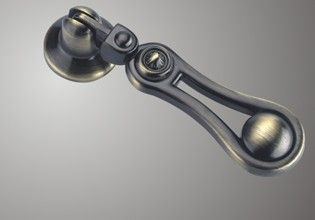 According to reports, the gross profit of the furniture hardware industry is now about 20% to 30%, and the net profit is generally about 5%. The profit of the agency processing is even less, and 15% of gross profit has been capped.
According to reports, the gross profit of the furniture hardware industry is now about 20% to 30%, and the net profit is generally about 5%. The profit of the agency processing is even less, and 15% of gross profit has been capped. The furniture industry will reach the ceiling when it reaches a certain scale. According to reports, after many large furniture factories in Shunde have reached a certain scale, they will choose a diversified development model. For example, the funds will flow into steel, fabrics, real estate, credit and other fields, and the furniture industry will become less and less in the proportion of the entire company.
The per capita consumption of furniture in China is far from the level of developed countries in Europe and the United States, and there is still room for market development. Afterwards, the competition in the furniture market will no longer be a purely manufacturing capability competition. It will involve product R&D, marketing, branding, communications, and management. Luo Baihui, an expert in the operation of Chinese manufacturing brands, believes that the industrial chain of the Foshan furniture industry cluster is relatively complete and the distribution efficiency is high. However, the overall level is not strong enough. To fundamentally reverse the trend, we should focus on developing brand strategies and cultivating influential big brands so as to accelerate industrial upgrading in the entire region.
In August this year, the Shunde Furniture Association initiated the Pan-Home Furnishing Union, the Shunde Furniture Brand Alliance, and the Raw Materials Alliance. This move was interpreted by the outside world as the adoption of high-quality brands to enhance the influence of Shunde furniture brands to gain more market discourse power.
There are still a small number of enterprises in the Shunde area that have maintained relatively stable development status. Lan Xiaohua, a research fellow at the Chinese University of Hong Kong, found that a certain brand of top fabric sofa in Longjiang has found a new development path through channel innovation. The brand does not open stores, does not look for distributors, and completely passes the channels to the hands of top designers. Through the designer's work, the products flow to the market, and then give the designer a certain amount of business. According to the person in charge of the brand, through previous market inspections, they found that the most talked about sales of high-end furniture products are often interior designers. For example, when designers design model houses, hotels (hotel decoration renderings), villas (house decoration renderings), and government offices, they put our products into the market. The chances that target consumers are impressed are far greater than the sales guide. Promotional chances of success. Lan Xiaohua believes that through orders from designers, it can also generate sales of several hundred million yuan in one year. Through the designer channel, it can not only ensure the stable sales of products, but also enhance the brand's influence.
Luo Baihui, an expert in China's manufacturing brand operations, believes that it is also a good way to spread risks through the development of multiple channels. In general, the multi-channel model mainly includes: domestic + foreign, direct-operated stores + distributors, and private label production + OEM.
What we do is mainly the domestic and foreign dual-channel development model. Over the years, the brand has also increased its national presence while also taking into consideration the development of foreign markets. We have always emphasized the international perspective of product design. In the days following the annual March and September exhibitions, there are more foreigners than the Chinese. The brand's annual sales of about 200 million yuan, of which foreign sales accounted for three-quarters of total sales. A brand official revealed that this year, only the Japanese market took back tens of millions of dollars of orders, South Korea, Dubai market also has a good performance. In addition, the brand also began to adopt a multi-channel development model in the domestic market, with distributors as the mainstay, and direct-operated stores as the supplement.
Luo Baihui believes that multi-faceted development channels can effectively share risks. After this round of industry reshuffle, the threshold of the furniture industry will increase and the development will become more standardized. Companies with strong and advanced ideas will gain more market opportunities.
Intelligent Street Lamps are also called intelligent lighting or smart street lights.It adopts the Internet of things and cloud computing technology to comprehensively upgrade the urban public lighting management system, so as to realize centralized control, operation and maintenance information and intelligent lighting of street lamps.The most advanced versions of Intelligent Street Lamps have been designed to create a happy atmosphere in roads, streets, squares and other places.The design of intelligent street lamps can only be designed by a wide range of discussions and environments that provide an aesthetic consistency.
Intelligent street lamp system
The core functions of intelligent street lamp include Intelligent lighting,Smart city applications,The information publishing system,Intelligent security,Charging pile,Distributed monitoring sensor system.

Product feature
1.Sensor
Sensor norise
Air pollution sensor
Temperature/humidity sensor
Brightness sensor
Municipal construction monitor
2.RFID
Special crowed monitor
CMC monitor
Community security monitor
Municipal facilities monitor
3.Communication Services
Micro base station
Street lights embedded WIFI hot spot
4.Video Monitor
Security monitor
Vehicle monitor
5.Emergency Broadcast
Active of the external field radio monitoring center
6.Intelligent Lighting
Cellular cooling technology
Based on the luminance uniformity of light distribution
Intelligent single lamp/center controller
Variety of modular design lamp,holder is optional.
7.Information Release
Advertising exposure
Current politics news
Information release
8.Charging Column
Electric car
Electric bicycle

Intelligent Street Lamp,Street Lamp,Street Lamp Post,Intelligent Lamp
Jiangsu chengxu Electric Group Co., Ltd , https://www.chengxulightings.com